

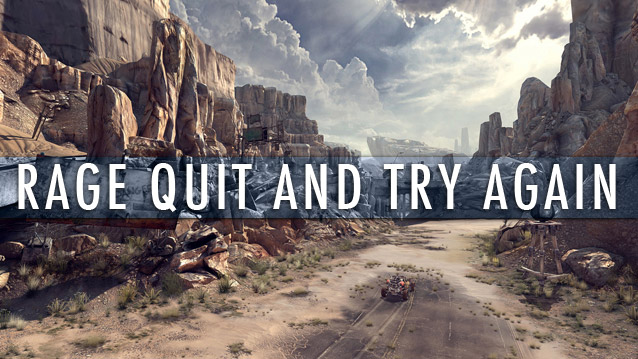
I have been known to be in that small camp of critics who adamantly believes there is a wrong way to play a videogame. Or, to put it in a slightly less divisive way: there are optimal ways to approach how you interact with any given game, and there are less optimal ways. Every game is designed with a kind of ideal player in mind, a player who plays the game in a manner the designers designed the game to be played in. You don’t have to play the game like this, but you can surely expect the game to not be the most pleasurable experience ever if, well, you play it wrong.
Every game is designed with a kind of ideal player in mind, a player who plays the game in a manner the designers designed the game to be played in.Both player and game have a responsibility in this relationship. It’s about meeting the game halfway: do what you want, but also be aware of what the game is asking of you. It’s kind of like dancing. In some instances, the game leads; in others, the player leads. Either way, every videogame requires some degree of cooperation between player and game. Though, unfortunately, sometimes a game might not be so good at communicating, and just what it needs of the player might not be very clear at all.
Such is the case with Id’s Rage. Some background: When I first heard of Rage several years ago now, I was incredibly excited. Running on a post-apocalyptic high of Fallout 3 and Borderlands, I couldn’t get enough wasteland, scavenger-themed survival shooters. I wanted more, and Rage look like just the thing. A big open-ish world, tight combat, beautiful places drawn up with beautiful graphics. Its release couldn’t come soon enough.
Then I bought it the day it came out, and I hated it.
The story was terrible, something about THE RESISTANCE fighting THE AUTHORITY. The graphics were great, but they were wasted by texture popping and uninspired deserts. The guns looked and felt great, but for the first few missions I was stuck with nothing but a boring pistol. Enemies would drop weapons that I, a scavenger, could look at and not pick up. The game was structured like a babushka doll of mediocre mission design. Person A wanted you to get X from Person B who would exchange X if you got him Y from Person C but only if you won Z races. Worse still, several missions had me clearing out exactly the same bandits from exactly the same cave I had just eradicated them from during the previous mission, obliterating any sense of a consistent, diegetic world. And then there was the driving. The driving was dreadful and, let’s face it, we all knew the driving would be dreadful the moment Id promised the driving wouldn’t be dreadful.
I put up with Rage for three hours. Well, it was closer to four hours, but I lost the last hour when a bandit killed me and I realised just how terrible the auto-save feature was. I rage-quit and planned to never go back. I hated the game with a passion. It was exactly not the game I had been led to believe it would be.
Or, perhaps, it was not the game I let myself believe it could be.
So I tried to forget about Rage. I went on and played Gears of War 3, Modern Warfare 3, Skyrim, and many of the other vastly superior games that came out late last year. But every time I looked at my game collection, Rage was still there. Every time I saw the case sitting there I remembered the things I actually enjoyed about the game: decapitating a bandit with a wingstick; the butt of the shotgun punching into my character’s chest; a mutant bouncing off walls and ceiling alike as it sprung towards me; the jaw-dropping panorama of a city half devoured by the desert.
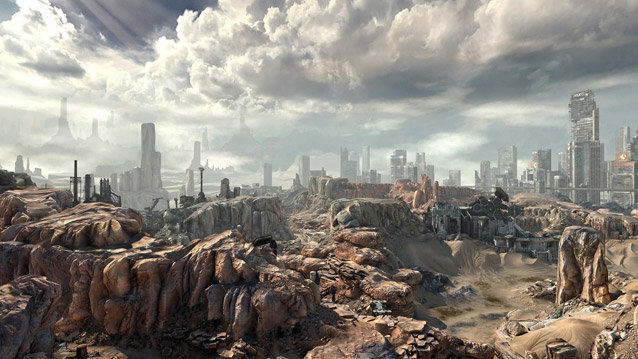
Then, in the opening weeks of the new year, I found myself playing all kinds of fast-paced, old-fashioned shooters. I played Bulletstorm. I played the original Marathon. I played Vlambeer’s throwback retro-shooter Gun Godz. After many months spent with the slow, contemplative play of Skyrim, I was craving something fast and absurd and twitchy.
It was in this mindset that I finally went back to Rage.
I replayed the mission that I had rage-quite on, and it didn’t take long for me to realise that there was something subtly different about how I was approaching it. I wasn’t a bullet-frugal scavenger, hanging back and trying to stealthily take out as many bandits with my crossbow as possible. I was the descendant of Doom’s marine, running in with a shotgun blasting, throwing a wingstick before diving behind cover, swapping for my rusty assault rifle and its armour-piercing ammo with a flick of the analog sticks in time to take out the tankish figure stomping at me. I ran through the hideout with a reckless abandon, swapping weapons ever five seconds, not worrying about how much ammo I was using or how much I was getting hurt. As the elevator returned me to the surface at the end of the mission, I suddenly realised that I had thoroughly enjoyed the mission.
Since repeating that mission, I have now more than tripled the time I have spent with Rage. The driving is still terrible (seriously, why is this even here?) and the story may as well not even exist, but underneath the superfluous crap and hidden behind the first few terrible introductory hours, I have found a surprisingly enjoyable game. Or, perhaps, an average game with some surprisingly enjoyable bits.
I stopped playing it like a glacially paced RPG with a terrible story and started playing it like a rapid and lively corridor shooter with a diverse array of enemies and skirmishes.Ultimately, I started to enjoy Rage by approaching it differently. I stopped playing it like a glacially paced RPG with a terrible story and started playing it like a rapid and lively corridor shooter with a diverse array of enemies and skirmishes. For those first few hours, I was trying to play Rage in a style that it was never meant to be played in. Now, returning to it after playing many other twitchy shooters, I have found the ‘right’ way to play it, and I am having a vastly more rewarding time for it.
But whose fault is it that I played the game ‘wrong’ in the first place? Well, I think we are both partially to blame. I probably should have caught on a lot sooner than I did that Rage was more straight-up shooter than survivalist RPG. After all, it is an Id game. But, on the other hand, the reason so many people didn’t enjoy Doom 3 was because they were expecting a straight-up Id shooter.
Which makes me suspect the problem largely lies, in this case, with Id. Rage did a louse job of communicating to me what was expected of me—both in its pre-release marketing and in the opening hours of the game. Rage suggested that it wanted me to feel like I was part of a world in the way Fallout 3 and (to a lesser extent) Borderlands do. But, really, it actually wanted me to be playing a twitchy corridor shooter ala Doom or Serious Sam—except one where each level is a long, monotonous drive from the last level.
If playing a game is to be a pleasurable experience, players and games have to meet each other half way. Players have to slip into the role the game has opened up for the player (or, at least, acknowledge why the game might not be working properly if they refuse to fill that role), and games have to ensure that the player’s role is adequately communicated to the player. Rage does not do this. I eventually figured out what it wanted of me, but only third-handedly by playing other shooters that put me in the right mindset. Videogames are a dance between player and game, and each has to communicate their moves and needs clearly to the other. After all, it takes two to tango.
Image credits: Dead End Thrills
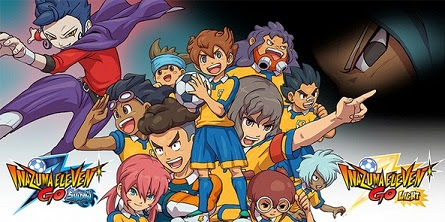



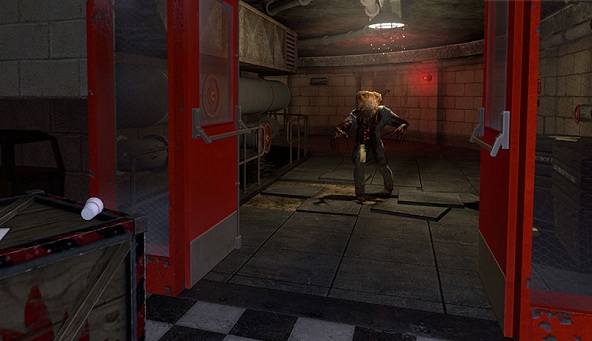 Black Mesa – Mod Walkthrough
Black Mesa – Mod Walkthrough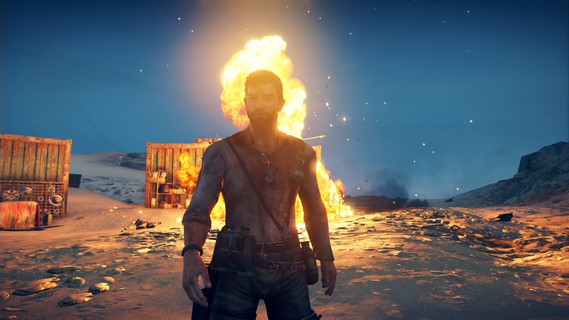 Mad Max: Where to find the Car Bodies Location Guide
Mad Max: Where to find the Car Bodies Location Guide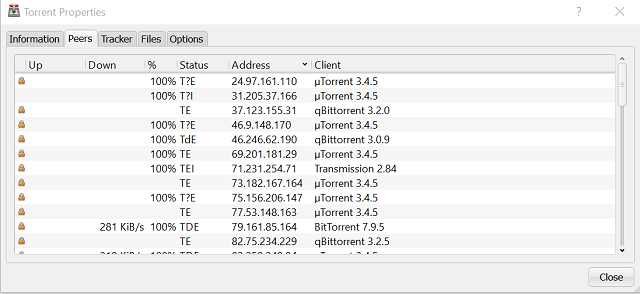 This One Vulnerability Might Leak Your IP When Using A VPN
This One Vulnerability Might Leak Your IP When Using A VPN Dare House Escape Walkthrough
Dare House Escape Walkthrough GTA V: GTA Online Heists Mega Guide: How To Start Heists, Setup Missions, Awards, Replaying Heists & Adversary Modes
GTA V: GTA Online Heists Mega Guide: How To Start Heists, Setup Missions, Awards, Replaying Heists & Adversary Modes